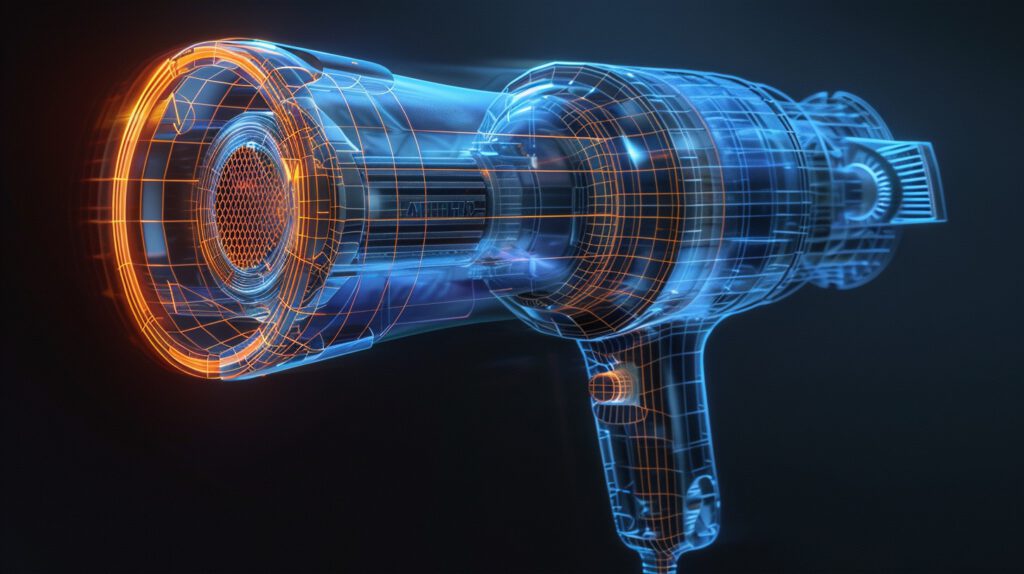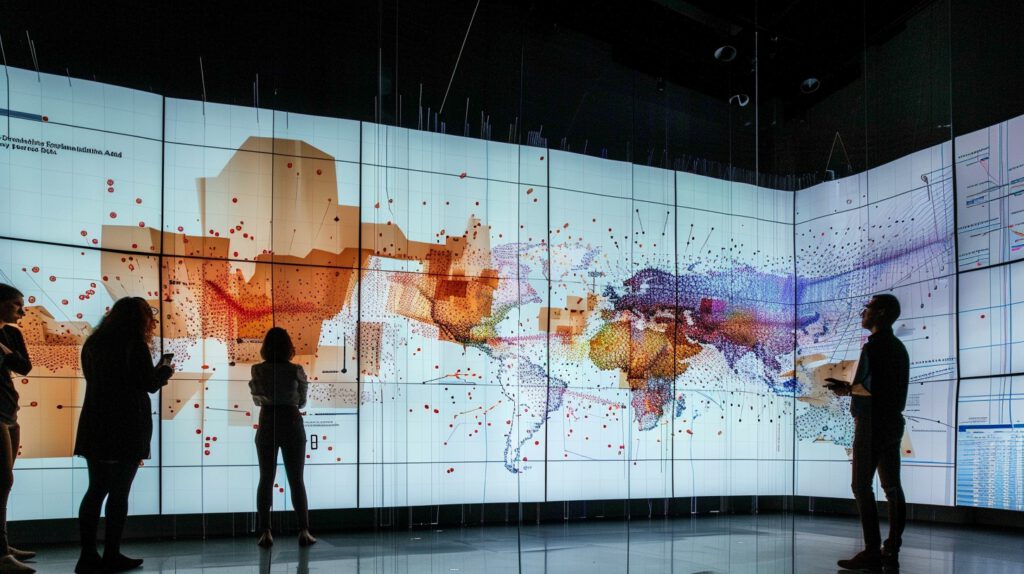
Many of you are familiar with the spectacular visual effects in movies like Star Wars, Lord of the Rings, and Titanic, and have seen the advanced graphics in video games such as Quake, Tomb Raider, and the latest AAA releases. It’s also becoming increasingly clear how integral 3D technology has become in modern production and design processes. Computer-Aided Design (CAD) has expanded the realm of possibilities for engineers, allowing them to bring their visionary concepts to life in unprecedented ways.
Turning on your TV or choosing a streaming service often leads to viewing advertisements that feature products rendered with such photorealistic quality and camera movements that defy the capabilities of traditional live-action filming. Despite this, the realism is so convincing that it leaves you fully persuaded of the product’s authenticity.
3D technology’s application extends beyond entertainment and advertising; it has also made significant strides in the medical field. For instance, ophthalmologists utilize 3D scans of patients’ eyes to spot retinal abnormalities. This raises the question: why is 3D technology indispensable to your business? The answer is straightforward. This article aims to highlight the potential uses of 3D technology within your enterprise, such as creating photorealistic renderings of furniture in virtual settings.
Unlocking New Dimensions: How 3D Technology Transforms Business Operations
In the rapidly evolving business landscape, the adoption of 3D technology has become a cornerstone for companies aiming to stay ahead of the curve. This transformative technology offers unparalleled advantages, from the initial stages of design to the final phases of marketing and distribution. By integrating 3D technology into various aspects of their operations, businesses can achieve a higher level of efficiency, creativity, and cost-effectiveness. Below, we delve into three critical areas where 3D technology is making a significant impact: digitalizing product portfolios, revolutionizing marketing strategies, and optimizing cost and time efficiency. Each of these points illustrates the dynamic ways in which 3D technology is reshaping industries and setting new standards for innovation and excellence.
1. Product Portfolio Digitalization

In today’s competitive market, companies from a myriad of sectors—ranging from the dynamic world of fashion to the precision-driven fields of engineering and manufacturing—are increasingly turning to 3D technology as a transformative tool for their entire product lifecycle. This shift towards three-dimensional design and visualization is not just a trend but a strategic move to harness the full potential of digital innovation.
At the heart of this revolution are designers and creators who now have the capability to conceptualize and refine their products within a virtual three-dimensional space. This leap forward allows for an unprecedented level of detail and realism in the design phase, where every nuance of fabric drape, texture, and color can be meticulously simulated and evaluated. Beyond aesthetics, functional aspects such as the fit and feel of a garment can be explored, enabling designers to make informed decisions well before a single prototype is physically produced.
The benefits of adopting 3D technology extend far beyond the initial design stages. Once a product is digitally created, these 3D models become invaluable assets across various facets of business operations. In retail, for example, 3D models facilitate sophisticated shop planning and visual merchandising strategies, allowing companies to create immersive shopping experiences that captivate and engage customers. Similarly, in logistics and inventory management, the precise dimensions and spatial requirements of products can be accurately calculated, leading to optimized storage solutions and significant cost reductions.
Moreover, the use of 3D technology in creating digital twins of products offers the possibility for virtual testing and experimentation, further reducing the need for physical prototypes. This accelerates the development process and significantly cuts down on material waste and associated costs, contributing to more sustainable production practices.
In essence, the integration of 3D technology into the product lifecycle heralds a new era of efficiency, innovation, and sustainability. By enabling detailed visualization, enhancing decision-making, and facilitating cross-functional applications, 3D technology is redefining the way companies operate, design, and bring products to market, promising significant financial savings and competitive advantages in the process.
2. A Marketer’s Dream: 3D Data

The versatility and adaptability of 3D content have opened up a new frontier in marketing, providing businesses with innovative tools to showcase their products and engage with their audience. Whether deployed in real-time web applications, integrated into high-definition television advertisements, or utilized within mobile applications for immersive product placement, 3D models have proven to be an invaluable asset in the digital marketing arsenal.
One of the most compelling advantages of 3D content is its ability to create detailed, lifelike virtual environments and product representations discounted the cost associated with traditional photography and physical set-ups. This cost-effectiveness extends not only to initial production expenses but also to the broader scope of campaign deployment and adaptation. Companies like Ikea have leveraged this technology to remarkable effect, allowing customers to visualize furniture in their homes through augmented reality (AR) apps, thereby enhancing the customer experience and influencing purchasing decisions.
Beyond the cost savings, the agility of 3D content creation and modification stands out as a critical benefit in the fast-paced world of marketing. The ability to swiftly adjust and update 3D models in response to consumer feedback or social media trends enables brands to remain relevant and responsive to their audience’s preferences. This agility facilitates a dynamic marketing strategy that can evolve in real-time, ensuring that promotional materials are always aligned with the latest consumer insights and market demands.
Additionally, 3D renders transcend the limitations of physical and geographical constraints, allowing for the creation of scenarios and product visualizations that would be challenging, if not impossible, to achieve through conventional means. This capability opens up a realm of creative possibilities for storytelling and brand expression, enabling marketers to craft compelling narratives that captivate audiences and leave a lasting impression.
The integration of 3D content into marketing strategies also paves the way for enhanced interactivity and engagement. Through virtual and augmented reality experiences, consumers can interact with products in a highly immersive manner, fostering a deeper connection with the brand and a more profound understanding of the product features and benefits.
In summary, the use of 3D content in marketing not only offers a cost-efficient alternative to traditional advertising methods but also enhances brand visibility and consumer commitment through interactive and customizable experiences. As technology continues to advance, the role of 3D content in marketing is set to grow, transforming the way brands connect with their audiences and shaping the future of digital advertising.
3. Cost and Time Efficiency

The pursuit of cost and time efficiency is a universal goal across industries, and the strategic use of 3D data has emerged as a key factor in achieving this objective. The adoption of Computer-Aided Design (CAD) programs has become commonplace in the development departments of many companies, generating an abundance of 3D data. Despite this, the full potential of this resource is frequently untapped, often due to misunderstandings regarding the complexity and expense of converting CAD models into high-quality renders or a general lack of expertise in maximizing the utility of this data.
The underutilization of existing 3D data represents a missed opportunity for significant efficiency gains. When properly harnessed, this data can streamline various phases of product development, from initial concept visualization to the final stages of production and marketing. For instance, the ability to quickly iterate designs in a digital environment can drastically reduce the time and resources required for prototyping. Virtual testing and validation of products using 3D models can identify potential issues early in the development process, avoiding costly corrections later on.
Moreover, the integration of 3D data into the workflow enables a more seamless collaboration between different departments and stakeholders. Designers, engineers, and marketers can share and review 3D models in real-time, facilitating faster decision-making and reducing the likelihood of miscommunication. This collaborative approach accelerates project timelines and enhances the overall quality of the final product.
In terms of cost savings, the use of 3D data can significantly diminish the need for physical prototypes, which are often expensive and time-consuming to produce. By relying on virtual models for most of the design validation process, companies can allocate their resources more effectively, investing in physical prototypes only when necessary. Additionally, the digital nature of 3D data allows for efficient modifications and optimizations without the need to start from scratch, further reducing development costs.
Another area where 3D data proves invaluable is in the preparation for production. By using detailed 3D models, manufacturers can plan production processes more accurately, optimizing the use of materials and minimizing waste. This leads to direct cost savings and contributes to more sustainable manufacturing practices.
The challenge lies in overcoming the barriers to effective utilization of 3D data, which requires a combination of education, investment in the right tools, and possibly partnerships with specialists in 3D visualization and rendering. Businesses that invest in developing the skills and infrastructure needed to leverage their 3D data fully can unlock significant advantages in efficiency, cost savings, and competitiveness.
In conclusion, while the initial hurdles of utilizing 3D data effectively may seem daunting to some, the potential rewards in terms of cost and time efficiency are too substantial to ignore. By addressing the gaps in knowledge and misconceptions about cost, companies can harness the full power of their existing 3D data, driving innovation, speeding up product development cycles, and achieving greater efficiency and cost-effectiveness in their operations.
Conclusion
This overview of the multifaceted advantages of 3D technology aims to ignite your curiosity and inspire you to consider its integration into your business strategy more deeply. If the potential of these tools has caught your eye, yet you’ve hesitated, unsure of where to begin, let this serve as your foundational guide. I am not just offering information but extending an invitation to dialogue and collaboration. Together, we can embark on a journey to harness the innovative power of 3D technology, tailor solutions to fit your unique business needs, and unlock new levels of creativity and efficiency. I eagerly anticipate the opportunity to connect with you, to understand your vision, and to explore the vast possibilities that 3D technology can bring to your projects and objectives. Let’s transform ideas into reality and set new benchmarks in your industry together.
If you enjoyed this article, please consider commenting, liking, or sharing it with your network. Your engagement greatly contributes to spreading the insights provided. For more content like this, don’t forget to follow us. Your support fosters a community eager to explore and discuss innovative ideas together. Let’s keep the conversation going and dive deeper into our shared interests.
Leave a Reply